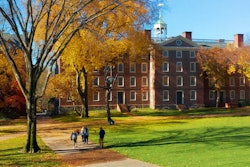Harvard Boosts Financial Aid
Harvard University announced Monday a major expansion of financial aid that will reduce tuition bills by thousands of dollars, even for families earning six figures.
The university said it would replace all loans with grants and spend up to $22 million more annually on aid, mostly targeting middle- and upper-middle-class students. Families earning under $60,000 already pay nothing to attend the world’s richest university, with an endowment of nearly $35 billion.
Now, however, parents earning between $60,000 and $120,000 will pay a percentage of their income, rising to 10 percent. Families with incomes between $120,000 and $180,000 will have to pay 10 percent of their incomes.
Harvard also said it would take home equity out of its wealth calculation in financial aid, which should provide a greater boost for students and parents. Overall, Harvard said a typical family earning $120,000 would pay about $12,000 next year, down from $19,000 under current award policies. For a typical family earning $180,000, the bill would drop to $18,000, from more than $30,000.
About half of Harvard’s students receive some form of aid, including students from about 100 families who earn more than $200,000.
For those who pay full tuition, room and board, the price is $45,620.
University officials said their surveys showed that even students from well-off families were feeling the pinch by having to work outside jobs and not being able to fully engage in university life. Harvard officials were also worried prospective applicants were scared away by the school’s cost.
Harvard President Drew Gilpin Faust said the money would come from funds from a variety of sources, including the strong returns on Harvard’s endowment.
–Associated Press
Stanford Faculty, Students Upset About Potential Loss of East Asian Library Collection
Stanford University’s historic East Asian collection needs a new home, and faculty and students are upset that the new home may be a storage facility 38 miles away, The San Jose Mercury News reported.
The collection of 520,000 Chinese, Japanese and Korean volumes is housed in the Meyer Library, which the paper described as “seismically unsafe” and is slated for demolition. Some of the collection will find space in the campus’ main library, but some will be shipped away.
Faculty and students are worried that the loss of the library could damage Stanford’s ability to attract top faculty and students at a time when the University of California-Berkeley has unveiled its $46.5 million C.V. Starr East Asian Library.
“Why is the East Asian community paying the biggest price?” for the destruction of the Meyer Library, Jane Oi, a professor in Chinese politics, is quoted as saying in the Mercury News. “I worry about the symbolic message to potential students and faculty we try to recruit.”
University officials say the campus is out of room. They note that only 5 percent of the East Asian collection is widely circulated.
–Diverse Staff
University of Utah: Students Whose Roommates Hold a Gun Permit Can Change Rooms
Though the University of Utah’s new gun policy for residence halls allows students to request reassignment if they discover their roommate has a concealed gun permit, the policy seems to be at odds with a new state law, The Salt Lake Tribune reported.
The new law allows students to ask to be paired with a gun-free roommate. But the university does not systematically find out which residents of dorms hold concealed weapons permits.
Lawmakers say the university does not have to determine which residents have a permit. They only need to, when housing assignments are made, match students who request a gun-free room.
University officials say they know of no dorm resident holding a permit and no resident has raised the issue.
“We rely on the student to discover the situation, and they come to us and tell us they are not comfortable with the situation,” said Jerry Basford, the associate vice president for student affairs, in the newspaper story.
–Diverse Staff
There are currently 0 comments on this story.
Click here to post a comment
© Copyright 2005 by DiverseEducation.com





















